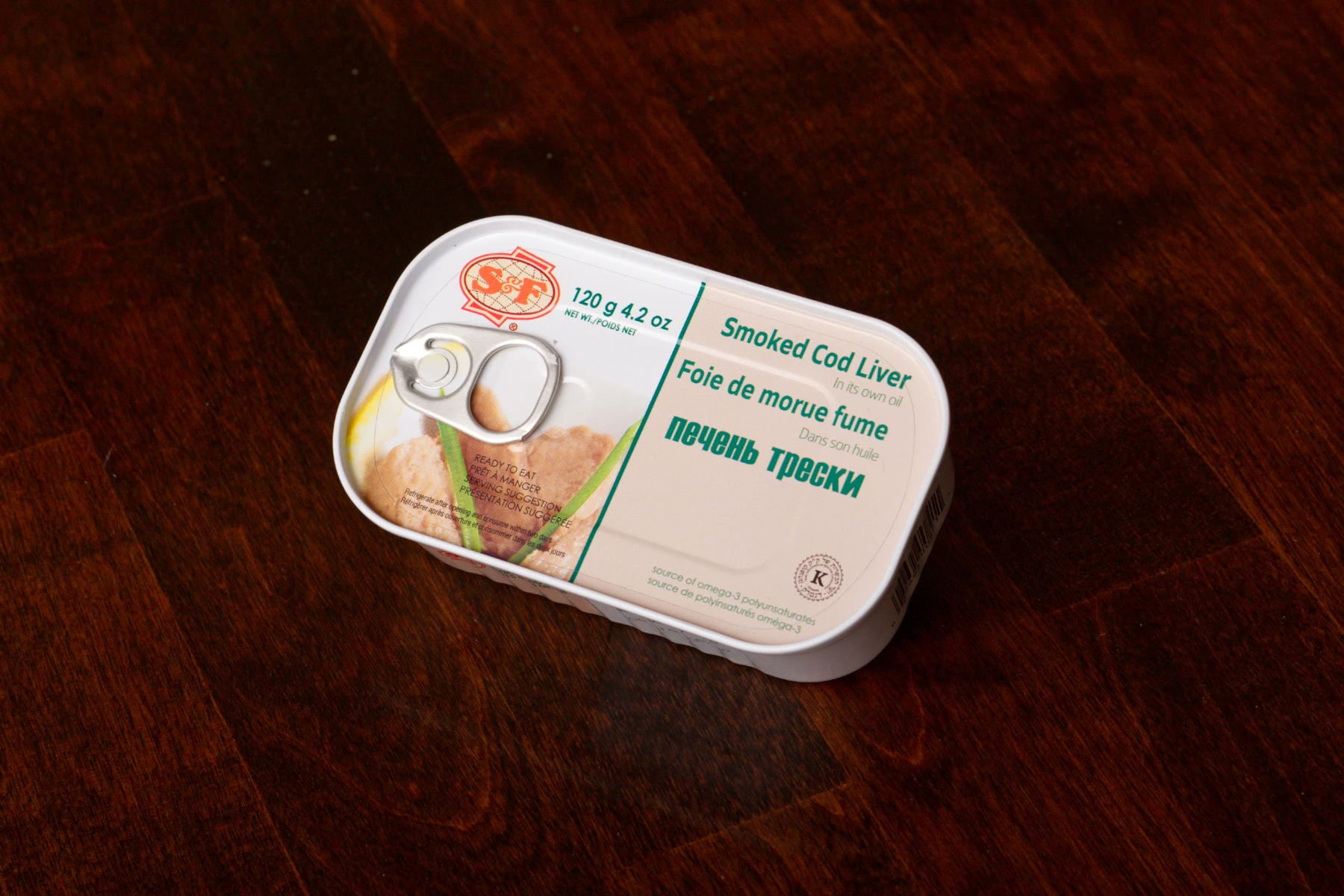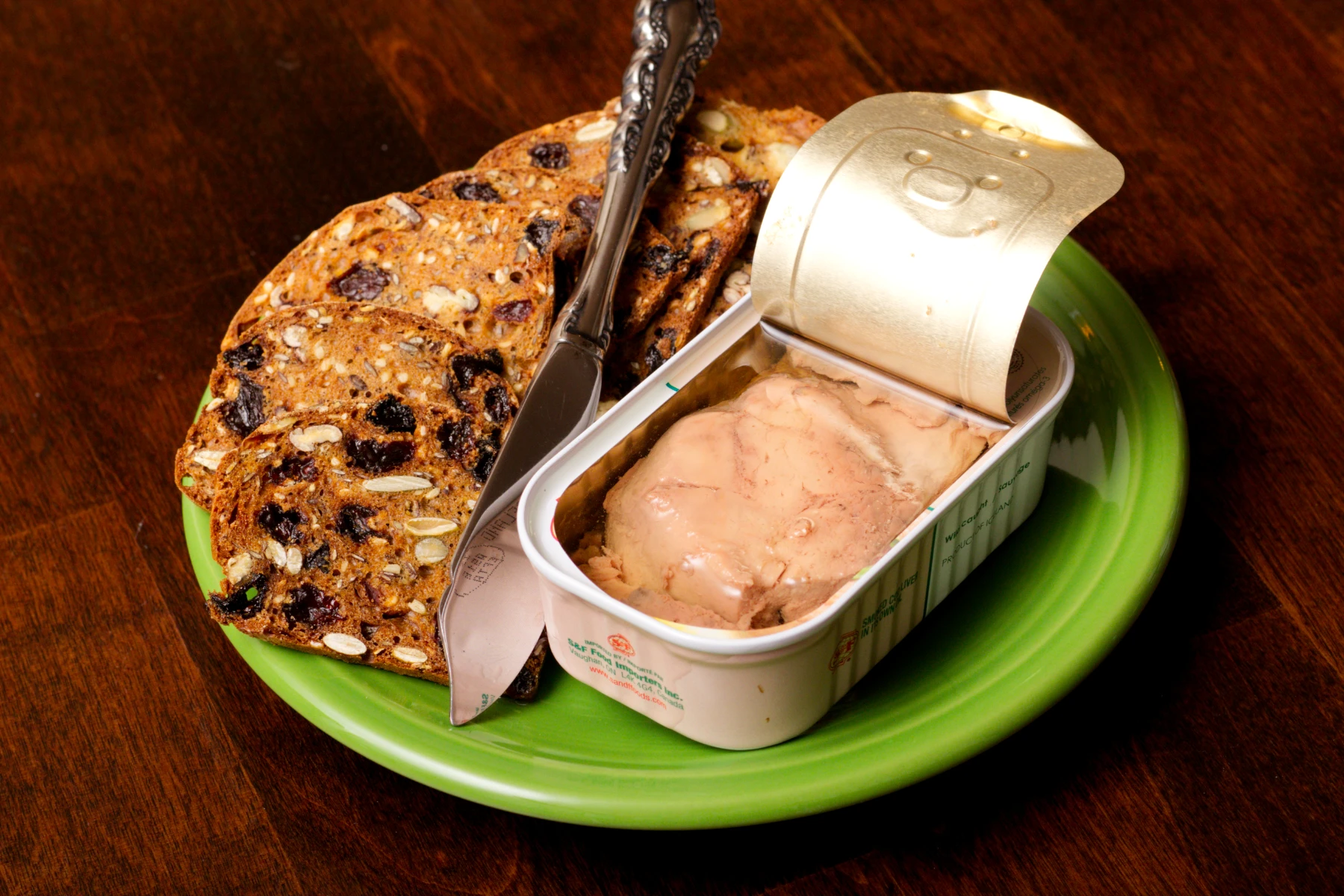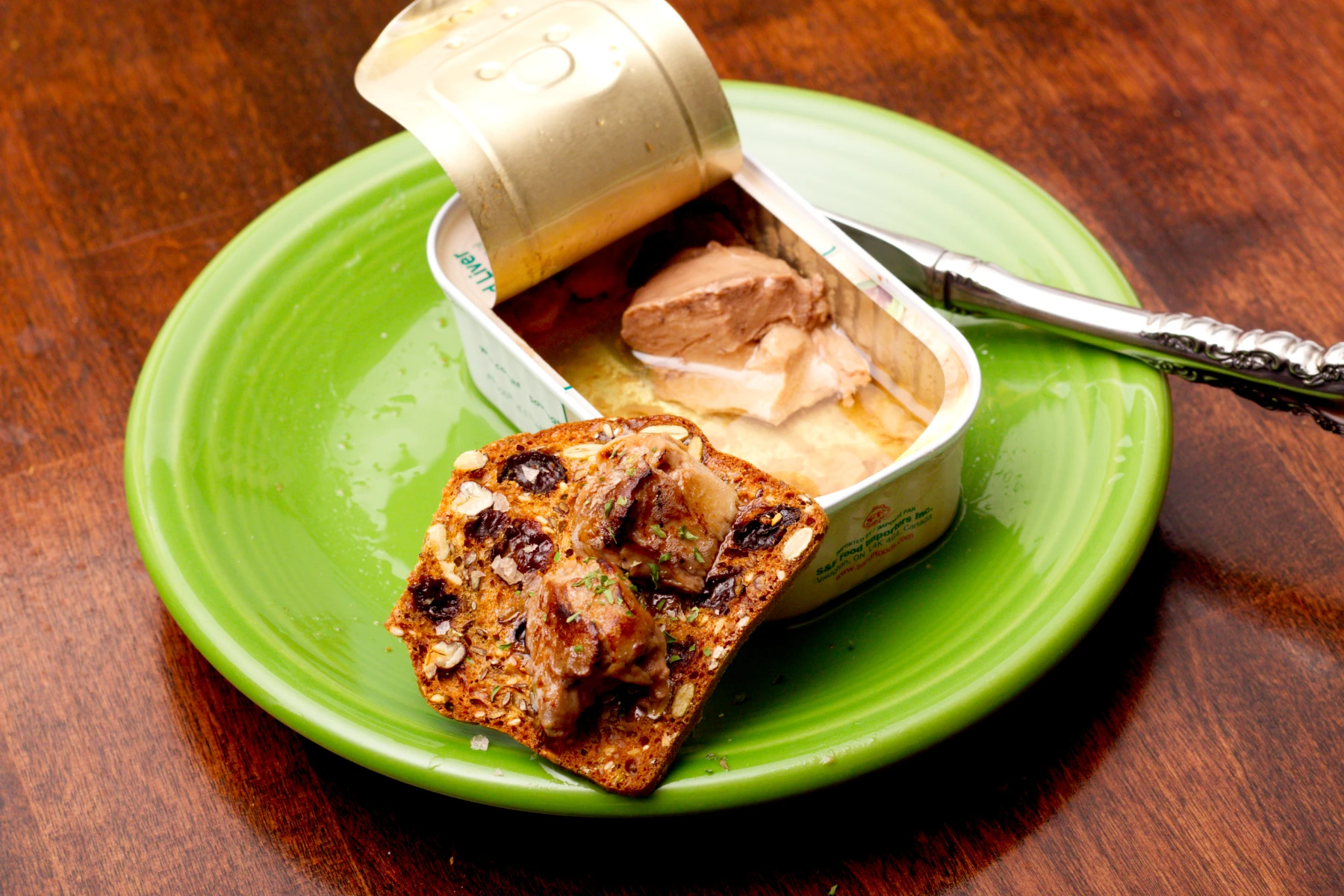S&F Smoked Cod Liver
Incodceivable!
Originally Published: Wednesday, March 1, 2023
Specs
 What treasures hide within?
What treasures hide within?Tell Us a Story Grampa
When I hear the words “cod liver” it immediately conjures the image of old man yelling at clouds. Cod liver oil is historically a very important dietary supplement because it contains what are colloquially called “good fats”. Unfortunately, the oil has earned itself a bit of a negative reputation in taste and application and has gone by the wayside now that most people have increased access to nutrition compared to the early 20th century.
Fish fats are highly unsaturated and stay fluid even in the cold temperatures of the arctic ocean, unlike other animal fats which begin to solidify at around 20-40 degrees Celsius. This trait gives fatty fish a creamy, silky texture since the fat remains liquid from the plate to your mouth, even when served cold. When I tried tuna otoro (very fatty tuna belly) for the first time, my face nearly melted off from the experience. The closest land-animal analogue is likely a fine piece of foie gras or highly marbled wagyu beef, but even those do not truly compare with the silky, literal melt-in-your-mouth textures of a fatty fish.
Now, you may be asking yourself, why the preamble? Well, I’m about to let you in on a little secret. The impossibly delicious experience of melty, creamy, silky, buttery, fatty piece of meat can be had by you for pennies on the dollar compared to the real thing. Enter, canned cod liver.
 Raincoast Crisps, a fantastic cracker.
Raincoast Crisps, a fantastic cracker.What?
Yes, you heard me. Cod liver. In cans.
Cod is one of the fattiest fish that we can catch in abundance, and the liver is the reservoir in which so much of the fish’s natural fats, flavours, and nutrients are stored.
This product from S&F Food Importers (actual manufacturers unknown) hail from Iceland. The cold seas near Iceland help promote fatty development in fish. The livers are lightly smoked before being packed in their own oil.
Opening the can was an adventure on its own as the oil filled can spilled its contents forth as soon as the ring was pulled.
Flipping the lid back revealed the light pink patties sitting in their own straw-coloured excretions. There was a faint smell of the sea that wafts up from the tin. It was maybe not the most appetizing looking thing, but the proof is in the pudding.
You Gonna Eat That?
Speaking of pudding, the liver certainly resembled it a bit. The product was easy to divvy up with even a butter knife as the texture was soft and tender. Spreading it was easy too, as the texture was very fine.
I tried a slice of the liver on its own to start, and it was astonishing. There was just a light wisp of smoke and a hint of salt, but what really works was the texture. It was creamy, fatty, smooth, tender, and all the other synonyms. The liver was very fine in mouthfeel, with no grit or sandiness at all. The oil that engulfed the morsel also helped to round out the entire experience. The texture can be described as a very creamy panna cotta or very dense Greek yoghurt.
The flavours were also nothing to write off. The distinctive iron-metallic flavours in every liver dish was present here too, but much subtler and more rounded. The metal was present and palpable, but not offensive or overbearing. These light metal notes enhanced the savoury and umami notes naturally present in the liver. Beyond the metal, there was a bold, fishy flavour that was unmistakably cod. As a lover of cod in my fish & chips, this was a bonus for me. The fishyness was not overwhelming, but rather served as a reminder that this liver came from the sea.
At this point, it’s no surprise that this product will be getting a high score from me, but to really find out why we have to talk about foie gras.
 A bit of an oil spill.
A bit of an oil spill.What Were You Saying About Foie Gras?
Foie gras, or fatty liver, is traditionally goose or duck, and costs an arm and a leg to procure. Fatty cod liver, however, will run you about $4 a can. What can you do with this $4 can? Well…
Aburi is your friend. Aburi is a Japanese cooking technique commonly used in sushi to prepare fatty fish. You essentially take a blowtorch to the surface of the protein and fire it up. This expresses the oils from the surface of the meat and creates some beautiful opportunities for the Maillard reaction. What you end up with is a nicely browned morsel of lightly heated liver with wonderfully enhanced flavours and textures. Sprinkle a bit of salt and chopped green onions, chives, or parsley on top and you have yourself the most decadent hors d’oeuvre that doesn’t break the bank. After a minimal amount of prep, what you have on your plate is the closest thing you’ll get to foie gras without the pricetag.
You may be saying right now, “I hate aburi!”, and I would slap you silly. However, I am a generous man so I will offer you an alternative. Make a paté. Mix up the liver with your favourite spices and turn it into the smoothest, creamiest paté you and your aburi hating friends will ever enjoy. If you mush up the liver with herbs and spices it also makes for a fantastic baked dip, no cheese required.
The technique people have tried for centuries to reproduce by overfeeding their geese and ducks is perfected by an unassuming fish with a goatee (look it up, they’re ridiculous) all on their own.
 I torched it good. It’s heaven on a cracker. Note the difference in colour after browning.
I torched it good. It’s heaven on a cracker. Note the difference in colour after browning.Living for Liver
My mission statement for this site is not to grade a product based on the preparations necessary to make it palpable, and that is still the case. The prep was not considered during scoring but dear god you have to try this if you like foie gras. I never realized I was a lover of cod liver, but I don’t think I will ever go without a can of this in my pantry.
This may just be an old man yelling at clouds, but sometimes what they’re yelling about is worth listening to. If you find this in your local grocery, buy it and try it.
